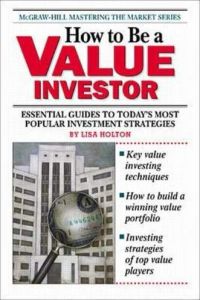Join getAbstract to access the summary!

Join getAbstract to access the summary!
Lisa Holton
How to Be a Value Investor
Essential Guides to Today's Most Popular Investment Strategies
McGraw-Hill, 1999
What's inside?
Stock Market 101 for investors who are patient and thorough, those tortoises who often win the race.
Recommendation
Lisa Holton describes the way value investors find bargain stocks. She looks at a variety of financial formulas that can help you unearth good deals. This is a useful primer for investors, since it offers clear explanations of financial ratios. The book includes plenty of specific examples of ways to apply formulas to a company’s financial statements. She clearly describes the contents of SEC documents and offers helpful advice about when to sell a stock. getAbstract recommends this book for beginner to intermediate investors, for those unfamiliar with "value investing," and for those interested in basic portfolio planning. This book focuses on the United States stock market and may be less useful in other countries.
Summary
About the Author
Lisa Holton is a business writer whose work has appeared in the Chicago Tribune and Better Homes and Gardens. She is the former business editor of the Chicago Sun-Times and a board member of the Society of American Business Editors and Writers.

















Comment on this summary